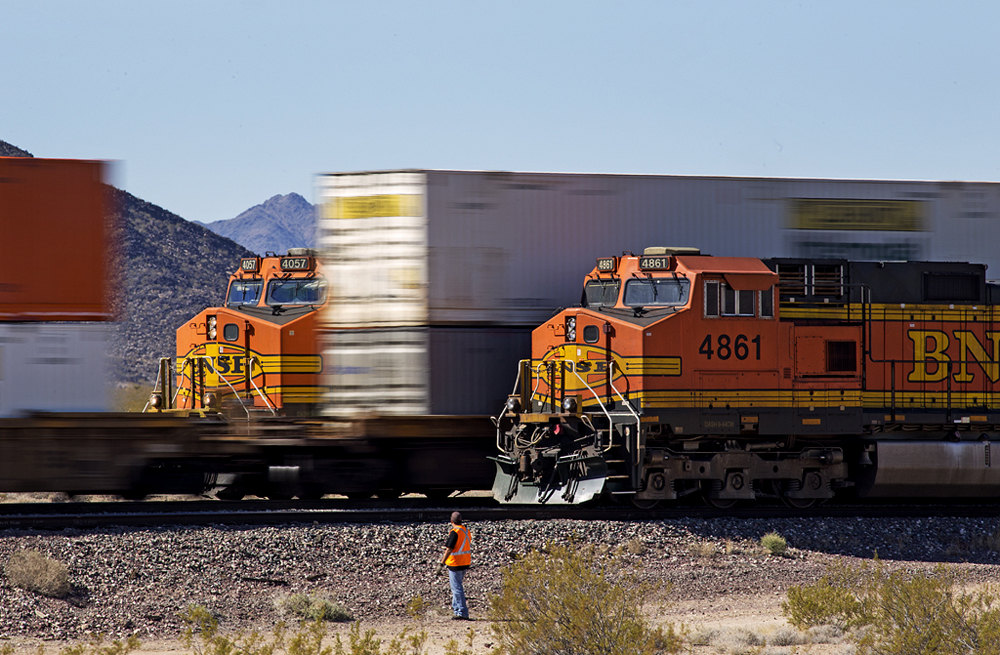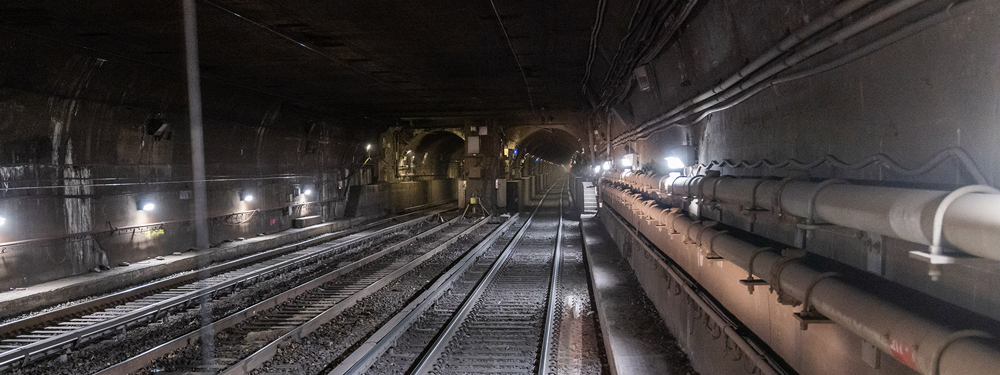
CHARLESTON, W.Va. — Class I railroads are hiring train crews to replace the droves of workers who retired or left the railroad during the coronavirus pandemic. Class I railroads currently employ less than 115,000 workers, 12% fewer than before the pandemic, according to Class I railroad data compiled by the Surface Transportation Board.
Despite an increase in post-pandemic rail business, railroads have added less than 1% to its workforce since the industry fell to a record low of 113,461 workers in January 2020.
It’s no surprise railroads have been trimming workforce since before the pandemic due to steady declines in coal business and Class I railroads’ adaption of Precision Scheduled Railroading. Railroads haul 50% less coal traffic than they did in the mid-2000s, and PSR seeks to reduce crew needs by running fewer, longer trains. But railroads were not expecting such a high number of people to leave the business during the pandemic. Nearly 17,000 fewer people work for the railroad now than they did two years ago. As a result, railroads’ workforces are too thin in places to handle growth.
Jobs that have seen the biggest decreases are equipment maintainers, down more than 23% since the pandemic started, a difference of 5,400 workers; train and engine workers, down 12%, a difference of 6,500 jobs; and maintenance-of-way employees, down 9%, or 3,000 jobs.
Railroads are aggressively hiring and training new workers. At this writing, the country’s seven Class I railroads had 690 jobs available spanning all crafts.
Hiring workers will allow railroads to improve operating performance and meet demand. CSX noted in its fourth-quarter 2021 earnings presentation that its hiring pipeline is strong and it’s filling training classes in a concentrated effort to improve service after staffing shortfalls dragged down operations in the prior quarter. Other railroads have made similar remarks.
Railroads’ hiring efforts aren’t necessarily short-sighted decisions to remedy today’s problems. Coronavirus’ effects on the workforce was like hitting a reset button. Unemployment peaked at 14% during the height of the pandemic in April 2020, a number unseen since the Great Recession. Since then, and as the economy has opened up, American workers have had abundant options in choosing a new career as opportunities flooded the market. This resulted in a lot of railroaders choosing other crafts.
And while automation and optimization will allow railroads to move more freight with less resources, railroads still need women and men to shepherd freight across America’s rail system, just as they need people to maintain equipment and infrastructure. And they especially need those people now.
Considering the circumstances, now is a good time to join the railroad and begin building seniority. It’s likely railroads may not experience another industry-wide hiring frenzy like what is being experienced today. Post-pandemic hiring has the potential to reverse railroad’s downward-trending workforce numbers only until railroads are adequately staffed again. Right now is a good opportunity for the millennial railroader.














This article looks like it was written by someone either employed by a Class 1, or has no idea what they’re talking about. This loss of high seniority employees started when RRs embraced PSR. Look at all the yards and maintenance shops that were closed with employees furloughed two years before Covid. I don’t know of a single person in the terminal I work in, who left because of Covid. Not to mention, where would they have gone? Everything was closed for most of a year.
Yes the retirement is great if you get there. You are always on call. As a conductor you always work alone. Train goes into emergency YOU walk the train by-your self along a right of way with many trip hazards. You work for a management who’s job is to fire you. At first bump in business you get laid off.
You have to make a set-off or puck up of 50-60 cars you do everything. Line the switches, couple and un-couple the cars and if you get a yard job you have to run the locomotive too.
There is no quality of life because there is no life.
On a Class 1 I learned and knew a lot about a little. On the Short Line I learned and knew a little about a lot. My experience was that the Short Line owners/team members were better adept than Class 1 at having “The Talk” to future railroad employees. If you are/were a railroader, you know what I mean.
The RRs need to improve the employee’s quality of life, scheduling, & the way they treat their employees if they hope to retain people. Is it any wonder why 3 of the top 5 worst places to work, as rated by Glassdoor, are Class 1 railroads?
Build seniority you say? Just point the new folks on over to the railroad’s propaganda site https://raillaborfacts.org/crew-staffing/ and they can see the RRs want to drastically reduce the numbers of conductors during this round of agreement negotiations. Further, a Federal judge decreed the conductor’s union must bargain with the railroads on crew consist, which is part of the agreement that keeps the conductor on a train today. (I think you left these two factors out of the article for some reason?)
I think you (for some reason?) left out the part about all the railroads laying off /FURLOUGHING workers when Covid arrived on scene. Not all quit on their own, many (most) didn’t have a choice. I also must have missed the statistic that CSX voluntarily shed 1/3 of their total workforce pre-pandemic.
The outlook doesn’t seem as bright as what I read in the article.
Hear, hear!
One of the biggest benefits of railroad employment carriers tout is the so much better retirement, thru Railroad Retirement. Yes! But you have to get there. Getting there is probably easier for a single person, who also likes railroads, but how many folks are willing to live a life alone, without kids or grandkids? A lot of spouses do not survive a railroaders career. Even if you’re lucky enough to have assigned days off, what about the stuff that can’t be scheduled to coincide with those days off, like kids ballgames and recitals?
As a GenXer I have always felt I was part of railroading’s lost generation. I entered the work force in the 1990’s when the railroads were still shedding their pre-Stagger’s labor force at a high rate. After hiring to replace the WWII generation in the 1960’s and 1970’s, there were plenty of 20 year railroaders with no intention of leaving when I went looking for railroad work in the 1990’s. With work directly for the railroad’s hard to find, I ended up working for a consultant in the railroad industry.
Two decades later I went from the twenty-year-old in the room full of sixty-year-old railroaders, to a forty-year-old in a room full twenty-year-old railroaders. At times I find that, despite being an outside consultant, I hold more institutional knowledge about the railroad than those that work for the railroad. I have thought of crossing the fence and working for the railroad directly, but at this point getting 30 years into railroad retirement would put me a little past my “best by” date.
Lost generation aside, from my perspective millennials are either the majority generation in the industry, or soon will be. The oldest millennials are now in their 40’s, and the youngest are over 25. They have fully supplanted the pre-Staggers Boomers and joined the smattering of the aging GenXer’s that managed to join the industry. Older GenXer’s are at the point they could start pulling the pin, so the percentage of millennials will only go up. Fortunately, most of the millennial railroaders I have meet are hard working and talented, not at all like the commonly held stereotype, so I think the railroads are in good hands.
At this point with the millennial generation now fully aged into the workforce, it may be time to start thinking of Gen Z as Gen X begins to exit.
With the combination of being on-call 24/7 and class 1’s suddenly shooting to the top of the worst places to work list, why would a millenial want to take part in a job where the out-of-touch PSR “suits” in management de-humanize all employees not residing in the HQ? The culture is awful and is ultimately the reason why people are leaving at a rate that wasn’t anticipated.
And that’s probably the endgame. “Hey government, no one wants to work for us, you gotta push through one-person crews with a path to eventual automation.”